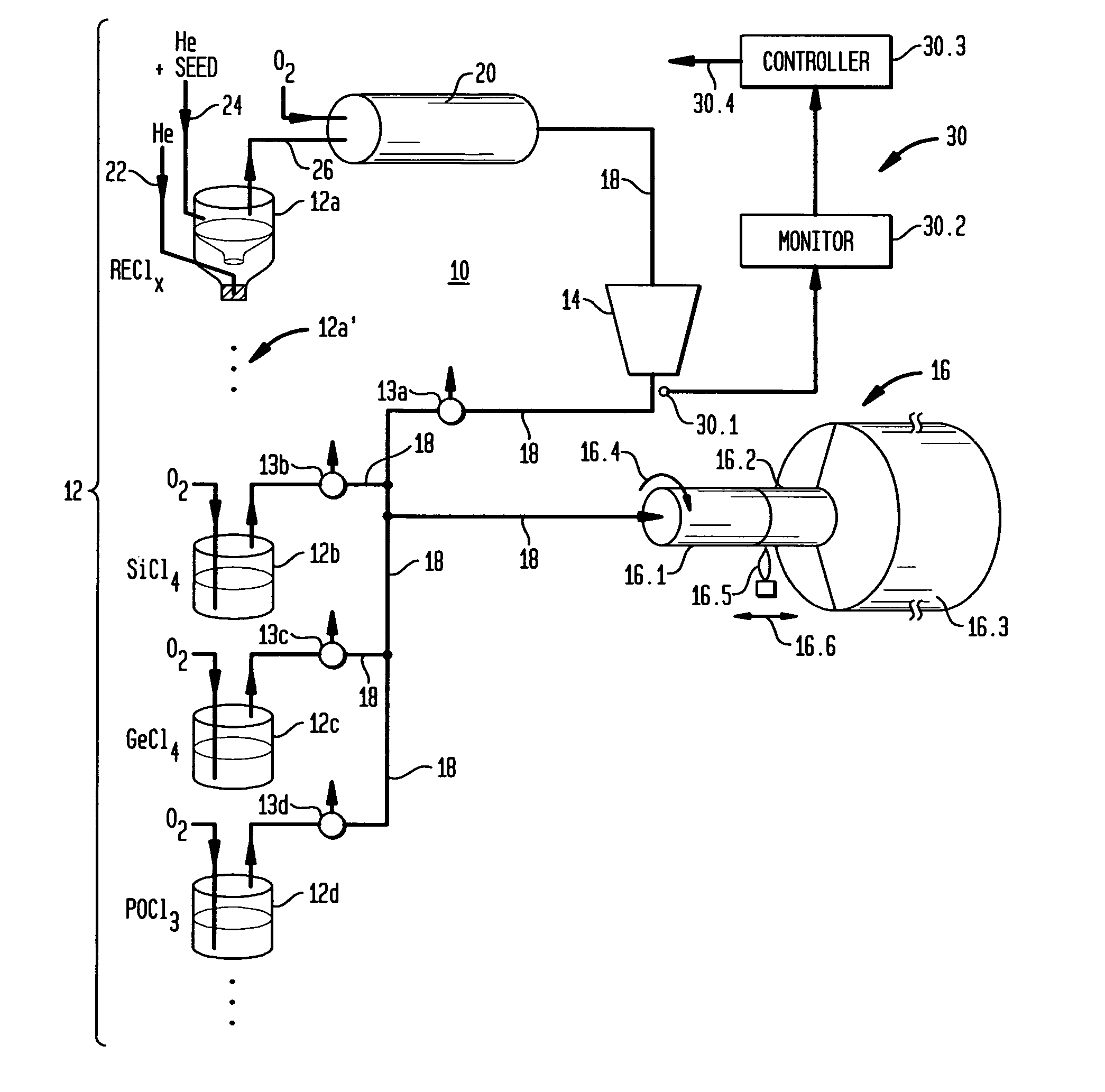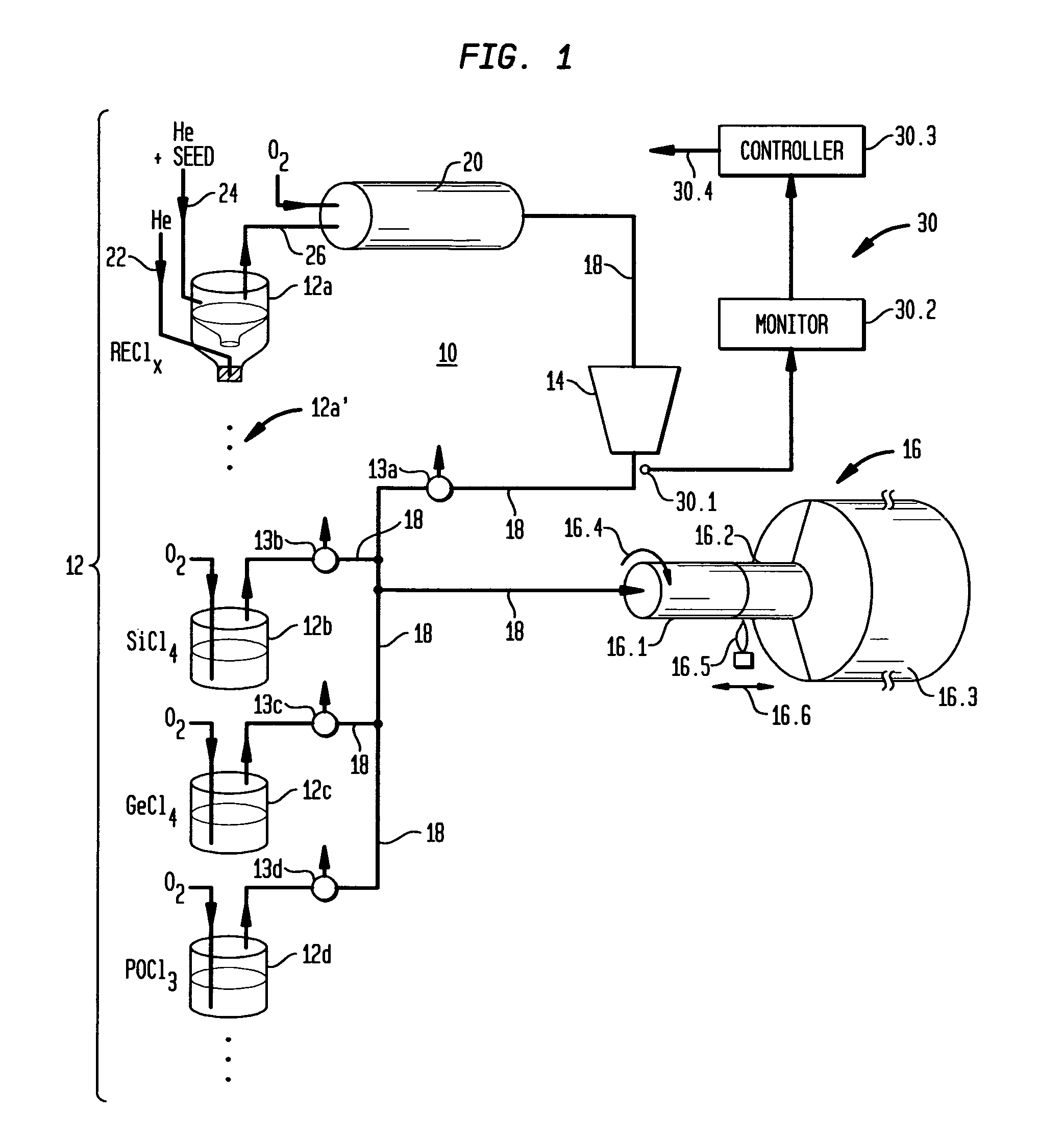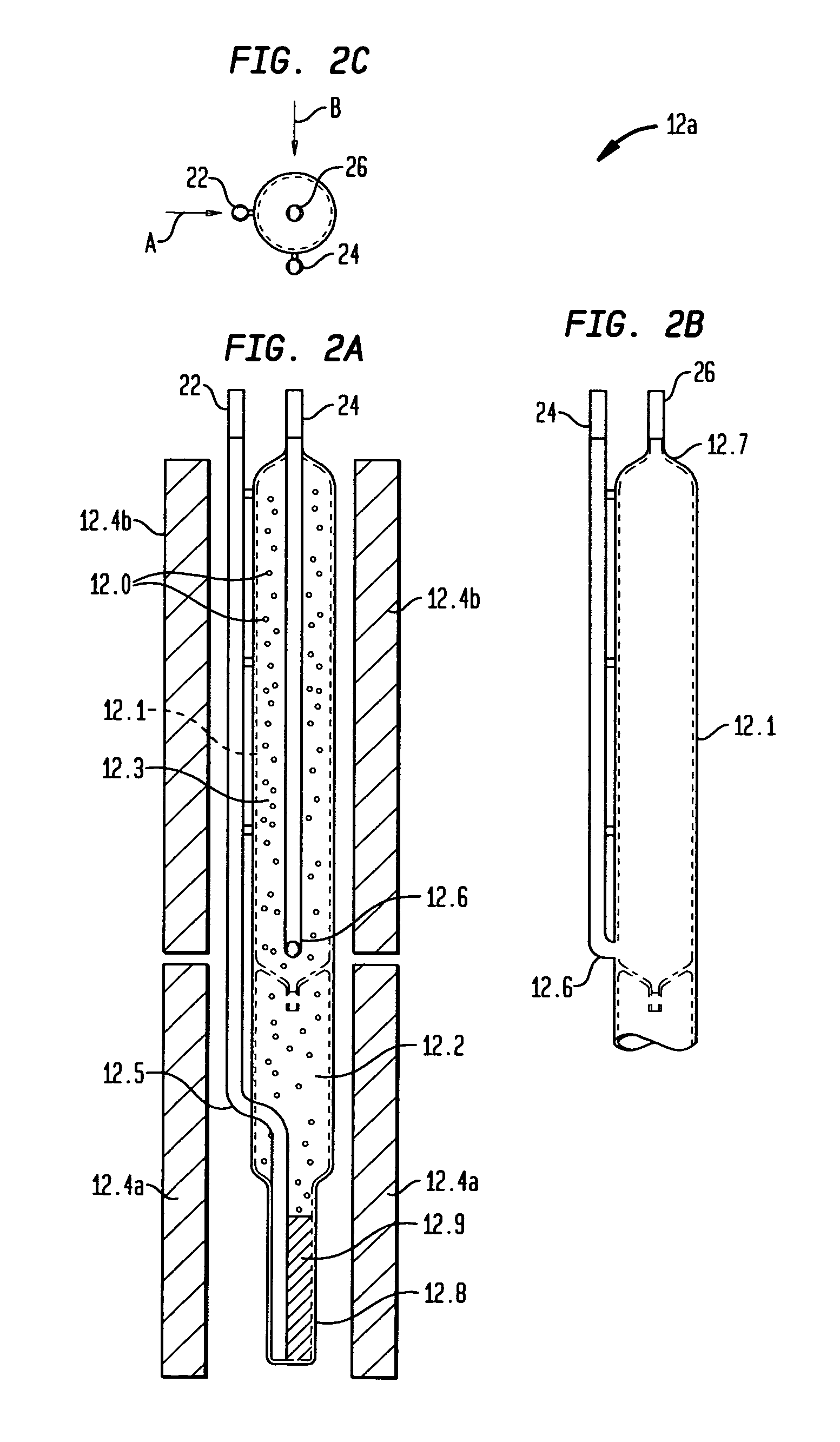Apparatus and method for fabricating glass bodies using an aerosol delivery system
a technology of aerosol delivery system and apparatus, which is applied in the field of apparatus and methods for fabricating rare earth (re)doped optical fibers, can solve the problems of low vapor pressure (lvp), inability to deliver using conventional vapor-phase approaches such as standard mcvd, and all have significant limitations
- Summary
- Abstract
- Description
- Claims
- Application Information
AI Technical Summary
Problems solved by technology
Method used
Image
Examples
example 1
[0063]The first example outlines a Yb—Al-doped silica preform that we fabricated. The YbCl3 aerosol generator 12a was maintained at 975° C. to achieve a high concentration of Yb. The primary He flow that bubbled through the molten YbCl3 was set to 0.5 liters / min, and the secondary He flow that cooled the saturated YbCl3 vapor in the condenser chamber 12.1 was set to 0.3 liters / min. These conditions for the aerosol generator were maintained for 1 hr before delivery to allow the system to reach equilibrium.
[0064]The MCVD system 16 was set up in the usual fashion, and all steps prior to the deposition of the Yb—Al-doped silica soot layers were carried out with the aerosol three-way valve 13a set to vent and using standard MCVD techniques. For deposition of the Yb—Al-doped layers, the valve 13a was switched so that the aerosol entered the delivery tube and mixed with the other precursor and process gases (e.g., He, O2). The SiCl4 bubbler 12b was maintained at 38° C. 100 sccm of O2 was b...
example 2
[0066]The second example outlines the fabrication of another Yb—Al-doped silica preform, as well as a fiber we drew from it. The aerosol generator 12a was maintained at 950° C. The primary He flow that bubbled through the molten YbCl3 was set to 0.38 liters / min and the secondary He flow that cooled the saturated YbCl3 vapor in the condenser chamber 12.1 was set to 0.5 liters / min. These conditions for the aerosol generator were maintained for 1 hr before delivery to allow the system to reach equilibrium.
[0067]The MCVD system 16 was set up in the usual fashion and all steps prior to the deposition of the Yb—Al-doped silica were carried out with the aerosol three-way valve 13a set to vent using standard MCVD techniques. For deposition of the Yb—Al-doped layers, the valve 13a was switched so that the aerosol entered the delivery tube and mixed with the other precursor and process gases. The SiCl4 bubbler 12b was maintained at 38° C. 100 sccm of O2 was bubbled through the SiCl4 precursor...
PUM
| Property | Measurement | Unit |
|---|---|---|
| sizes | aaaaa | aaaaa |
| vapor pressure | aaaaa | aaaaa |
| temperatures | aaaaa | aaaaa |
Abstract
Description
Claims
Application Information
 Login to View More
Login to View More - R&D
- Intellectual Property
- Life Sciences
- Materials
- Tech Scout
- Unparalleled Data Quality
- Higher Quality Content
- 60% Fewer Hallucinations
Browse by: Latest US Patents, China's latest patents, Technical Efficacy Thesaurus, Application Domain, Technology Topic, Popular Technical Reports.
© 2025 PatSnap. All rights reserved.Legal|Privacy policy|Modern Slavery Act Transparency Statement|Sitemap|About US| Contact US: help@patsnap.com



